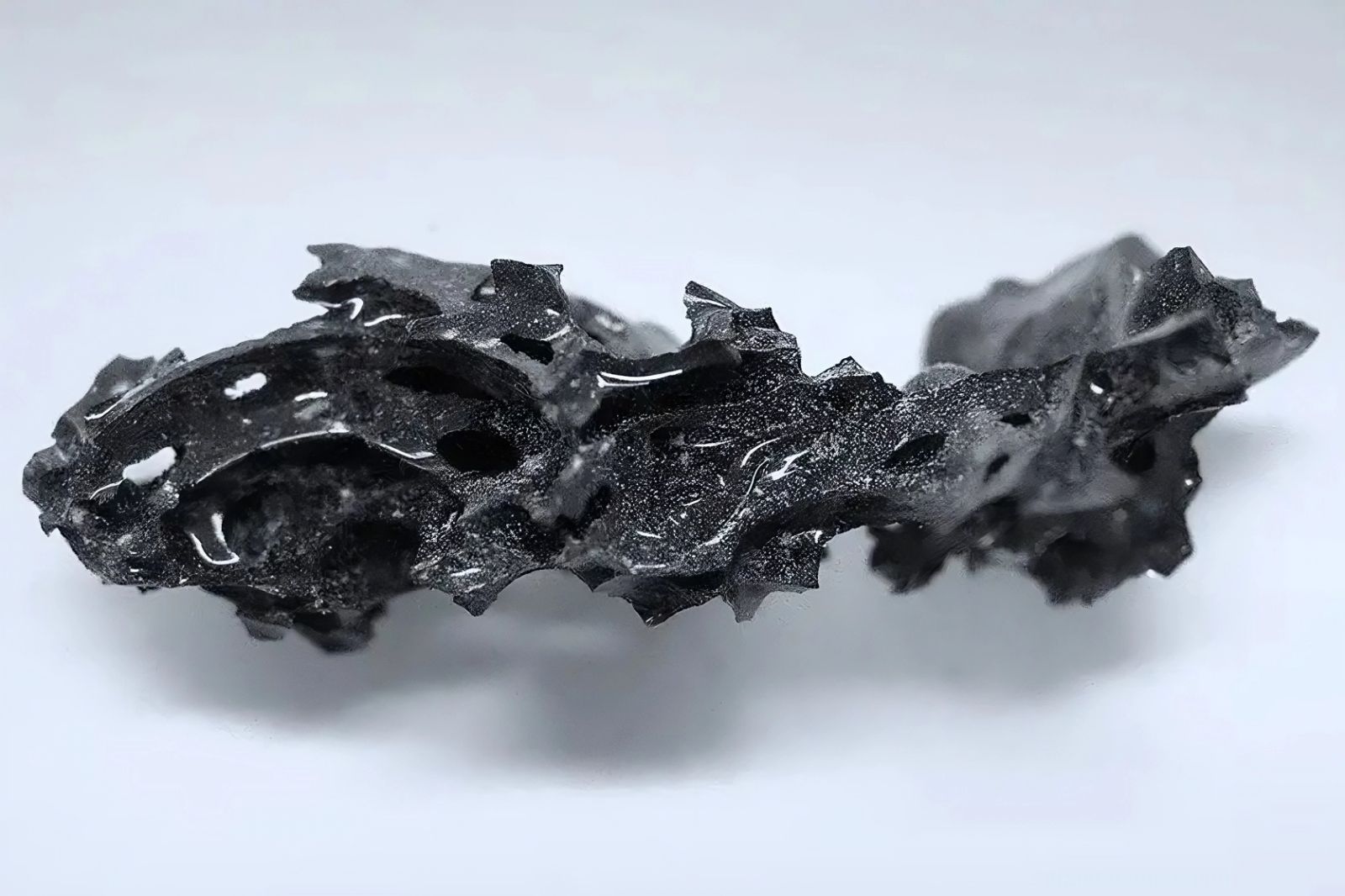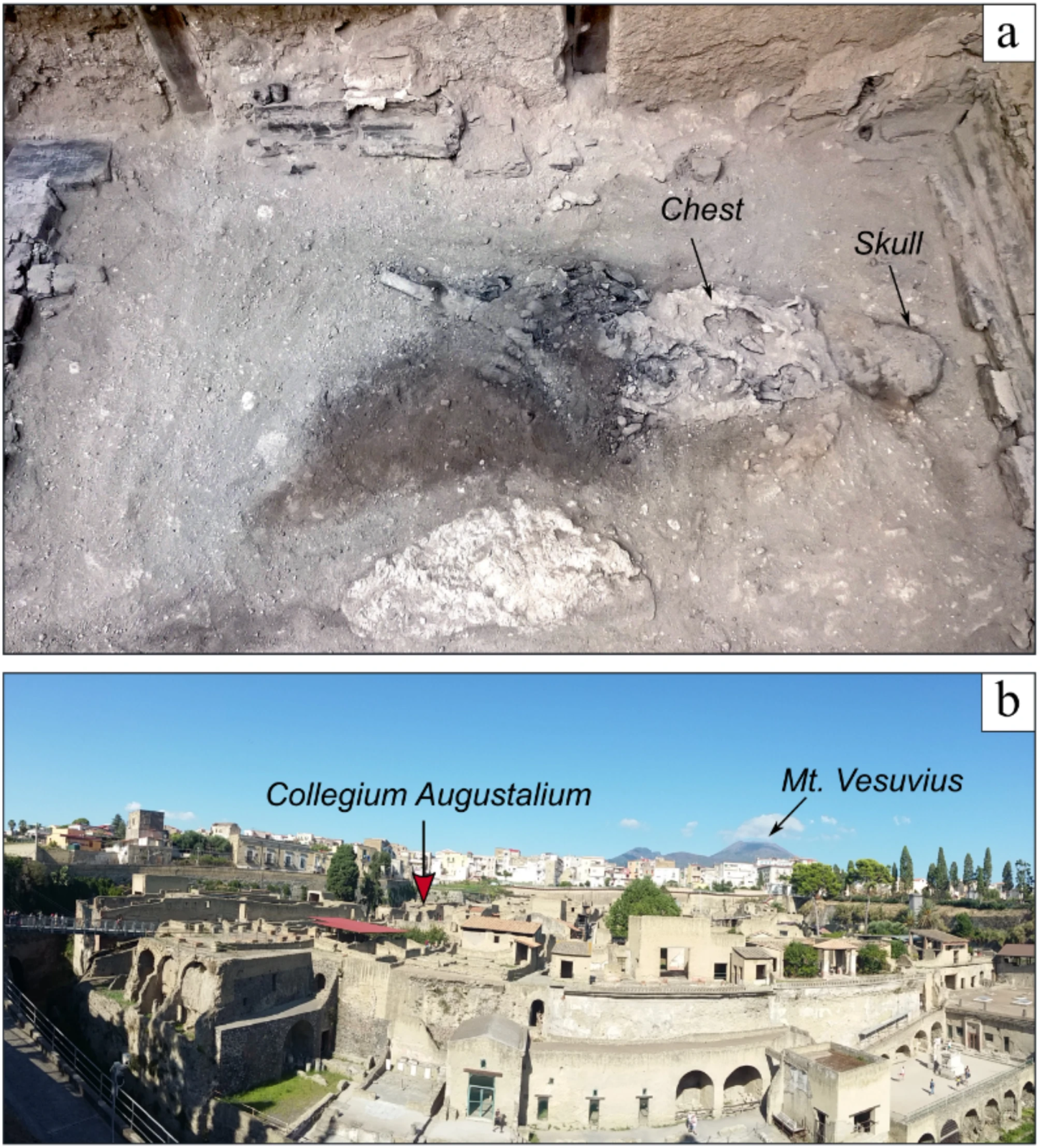How did this brain turn into glass? 🧠
Published by Cédric,
Article author: Cédric DEPOND
Source: Scientific Reports
Other Languages: FR, DE, ES, PT
Article author: Cédric DEPOND
Source: Scientific Reports
Other Languages: FR, DE, ES, PT
Follow us on Google News (click on ☆)

A sample of organic glass found inside the skull of a man from Herculaneum.
Pier Paolo Petrone
This discovery, made in Herculaneum, provides unprecedented insight into the extreme conditions of the eruption. Scientists have identified intact neuronal structures in this vitrified material, evidence of an exceptional preservation process.
A unique vitrification process
Vitrification, the transformation of a material into glass, requires specific conditions. For this victim's brain, a rapid rise to over 510 °C (950 °F), followed by instant cooling, was necessary. These conditions allowed for the preservation of microscopic details, such as neurons and axons, without the tissue decomposing.
Analyses conducted by an international team, including electron microscopy and spectroscopy techniques, confirmed the glassy nature of the material. These results, published in Scientific Reports, show that this process is unprecedented in archaeological records. Researchers also identified traces of brain proteins, confirming the organic origin of the vitrified fragments.
A reconstruction of catastrophic events
Researchers believe the brain was exposed to a cloud of superheated ash, reaching extreme temperatures in moments. This phenomenon, distinct from slower pyroclastic flows, explains the rapid vitrification. This cloud, composed of gas and incandescent particles, struck Herculaneum before pyroclastic flows buried the city under meters of volcanic debris.

(a) Charred body of the victim in their wooden bed within the Collegium Augustalium; the vitrified remains of the brain were found in their skull.
(b) Panoramic view to the east of the ruins of Herculaneum with Mount Vesuvius in the background and the location of the Collegium Augustalium in the city.
This discovery challenges traditional scenarios of the Vesuvius eruption. Until now, it was thought that pyroclastic flows were responsible for the destruction of Herculaneum. However, the vitrified brain suggests that an earlier event, brief but extremely hot, played a key role in the death of the inhabitants. This ash cloud, though short-lived, was intense enough to cause fatal damage.
This reconstruction of events has significant implications for modern volcanology. It shows that even ephemeral phenomena, such as a superheated ash cloud, can be devastating. These observations could help better predict risks during future volcanic eruptions, especially for populations living near active volcanoes.
To go further: What is vitrification?
Vitrification is a process by which a material transforms into glass. Unlike crystallization, where atoms organize in an orderly manner, vitrification maintains a disordered structure, typical of amorphous solids.
This phenomenon requires rapid cooling to prevent crystal formation. In the case of the Herculaneum brain, extreme heat and cooling allowed for this unique transformation.
What do the archaeological remains of Herculaneum tell us?
Herculaneum, like Pompeii, offers a unique glimpse into ancient Roman life. The bodies, buildings, and objects preserved under the ash allow archaeologists to reconstruct the daily lives of the inhabitants.
The discovery of the vitrified brain adds a scientific dimension to these excavations. It shows how extreme conditions can preserve organic tissues, opening new perspectives for the study of ancient remains.